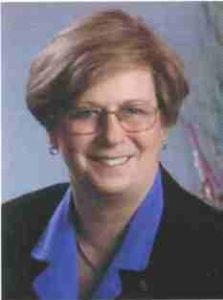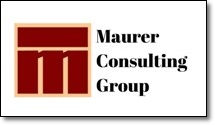‘Designing Strategies’ newsletter
May – June 2005 Volume 2 – Issue 5
It seems like an eternity that the hottest business topics have surrounded employment issues. We’ve heard that hiring will go up dramatically and it’s not going up but it should be. Clawing our way out of a long drawn out economic slump, this slow-to-recover economy has placed human resources issues at the top of everyone’s mind. Do we hire, or not hire? Should we out-source jobs or go off shore? How do we keep our most valuable key people? Where do we find talented employees to fill vacancies? The newest challenge is finding ways to successfully combine four very different generations in the workforce.
 Management struggles with these issues attempting to maintain stability or to grow stronger by cutting costs and increasing productivity. Just finding an adequate employee to fill a desk and complete a task is no longer sufficient. HR staff, management and leadership all need to learn the fine art of successfully combining several very different generations of workers within their organizations.
Management struggles with these issues attempting to maintain stability or to grow stronger by cutting costs and increasing productivity. Just finding an adequate employee to fill a desk and complete a task is no longer sufficient. HR staff, management and leadership all need to learn the fine art of successfully combining several very different generations of workers within their organizations.
Remember the conflicts between you and your own parents and your own children? Conflicts are usually based on differences in the way each generation thinks, their differing values, and work ethic. There is now and always has been, conflict between generations. Now with life expectancy hovering around 80 years, people remain in the work force longer than ever before. The result: up to four different generations attempting to work together under the same roof. Different generations in the workforce is our new reality.
New Generations in the Workforce Bring Challenges
So, how can you keep things running smoothly? Locating high quality employees to accomplish your plan for growth and success is a difficult enough task. What do you do with the mixed bag that you find working in your facilities? Our work force is now made up of four generations, beginning with Traditionalists born between 1928 and 1945, all the way through the early cusp of Millennials born between 1981 and 1999. Add in the Baby Boomers and Generation X and you’ve got a very interesting mixture of age groups, all of whom present very different and often conflicting characteristics and challenges to management.
Traditionals, still make up about 25% of the work force. This is a dedicated and loyal group that adheres to rules and shows great respect for authority. The Baby Boomer ‘ME’ generation seeks personal gratification and growth,. They like to work in teams, tend not to disagree with their peers and are overly sensitive to feedback. Gen Xers bring a higher level of technological literacy, but they are a very independent and adaptable group. They are not intimidated by authority figures, positions held by Traditionalists and Baby Boomers.
 Millennials bring a high level of civic duty and ethical behavior. They are quite technologically advanced, and want to do meaningful work. Unlike Boomers, for Gen Xers and Millennials, work isn’t everything. These are offspring of the inventors of the 60-hour workweek. Being raised by a generation of workaholics, these groups plan to work as a means to achieving a meaningful, balanced life. They come to you well educated, talented and achievement-oriented. They have higher expectations than the other generations, and any employer who does not find a way to match their expectations, will find they quickly go elsewhere in search of someone who will.
Millennials bring a high level of civic duty and ethical behavior. They are quite technologically advanced, and want to do meaningful work. Unlike Boomers, for Gen Xers and Millennials, work isn’t everything. These are offspring of the inventors of the 60-hour workweek. Being raised by a generation of workaholics, these groups plan to work as a means to achieving a meaningful, balanced life. They come to you well educated, talented and achievement-oriented. They have higher expectations than the other generations, and any employer who does not find a way to match their expectations, will find they quickly go elsewhere in search of someone who will.
You Really Can Combine Generations in the Workforce for Success.
So, how do you make this mixed bag of personality and characteristic types work harmoniously for the success of your organization? What is the answer? Or, more correctly, what are the answers? Insightful and creative managers will be in demand to successfully meld these divergent characteristics and assets. Addressing the range of characteristics and assets each group brings through a variety of filters can present a wide range of solutions. Educating generations about each other’s unique traits will go a long way toward understanding. Think of generational diversity like tossing a salad. A little of this, a little of that, toss it all together to blend ingredients with unique tastes and textures. Finding just the right combination of generational differences can result in success of a project, a strategy, or an entire organization.
Something to think about:
“The principle goal of education in the schools should be creating men and women who are capable of doing new things, not simply repeating what other generations have done; men and women who are creative, inventive and discoverers, who can be critical and verify, and not accept, everything they are
offered.” Jean Paiget (1896-1980)
 Generational differences are responsible for myriad corporate challenges. Low morale, high turnover rates, absenteeism, poor communication, high stress and low productivity are all typical with today’s workforce. Getting generational groups working together cooperatively and cohesively is the challenge facing corporate leaders and managers. Introduce diversity and sensitivity training programs to foster understanding among the generations.
Generational differences are responsible for myriad corporate challenges. Low morale, high turnover rates, absenteeism, poor communication, high stress and low productivity are all typical with today’s workforce. Getting generational groups working together cooperatively and cohesively is the challenge facing corporate leaders and managers. Introduce diversity and sensitivity training programs to foster understanding among the generations.
Buckminster Fuller, architect, mathematician, inventor and designer of geodesic domes, popularized the term synergism. Synergism allows for inclusion of divergent perspectives to achieve a sum that is greater than its individual parts. Simply put, one plus one can easily equal more than two. Any project will result in a superior solution when viewed from a number of very different perspectives.
What better way to optimize your workforce than to incorporate the various generations, their values, assets and characteristics? Focus those differences on growth and success. Have you looked at your employees lately? Perhaps the pertinent question is: do you really see them as individuals with their own perspectives on life, work, play, ethics and success?
Determining how to capture those unique qualities and capitalize on them is your challenge. Include members of different generations on your planning committee, in your customer service center, and on your board of directors. You will be amazed at how broad your view of your business and the world in general will become. Different can be a very, very good thing!






